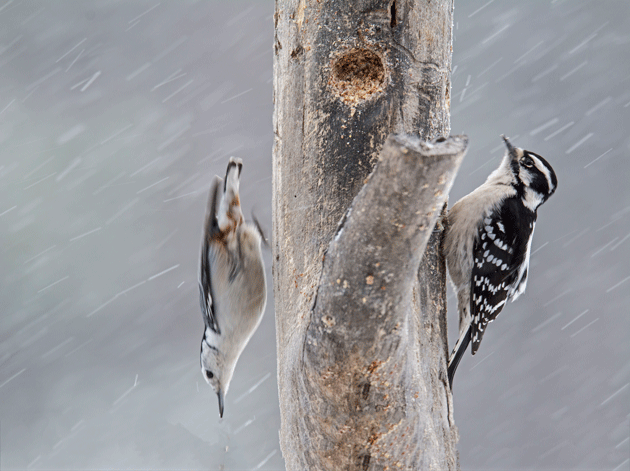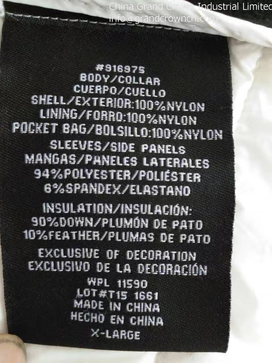[Nate writes...] It’s wintertime; the snow is falling and I’m watching the Downy Woodpeckers battle the Nuthatches in my front yard for the suet block.
|
I was thinking, what would be an appropriate exploration of the effects of Climate Change (CC) in the wintertime? It can be difficult to connect CC with cold temperatures, as most folks connect CC with global warming. However, there is mounting evidence that CC is making winters warmer. Also, the eloquent and active climate scientist Michael E. Mann has already explained that CC will bring more extreme temperatures and storms each winter. So what about everyday life in the cold? What do we take for granted whenever it’s cold outside? Then I thought, what about your winter coat!
|
(image source)
|
Most winter coats nowadays are synthetic fibers, but some include down feathers. Obviously coats are built for warmth and water protection. Synthetics are longer-lasting than natural fibers and tend to be more waterproof. Lastly, they tend to be cheaper than natural fibers, depending on the material. Let’s deconstruct a winter coat and examine each ingredient to see how CC might affect coats in the future.
|
Nylon is one of the original synthetic fibers, invented back in 1934. It’s a plastic derived from chemicals found in coal or petroleum. CC will likely have many indirect effects on the fossil fuel industry. Although renewable energy solutions are becoming more and more socially acceptable, there are still many cultural roadblocks preventing widespread switch from fossil fuels. Our continued use of fossil fuels means that these resources will ultimately run out, preventing the production of new plastics. Recycled plastic resources will become highly sought after. I’m not suggesting you start hoarding synthetic clothes as an investment, but keep in mind that synthetic clothing is often derived from plastics, which in turn came from fossil fuels. I predict nylon prices will increase as fossil fuel resources are depleted.
|
Spandex, too, is a fossil fuel derived synthetic fiber. It seems that this fiber is also tied to the price of petroleum products and the price/availability of spandex in the future is very uncertain.
All in all, it seems the synthetic fiber industry is tied to the fate of fossil fuels.* In the short-term, your winter coat composition and cost is unlikely to change. Waterproofing, warmth, and cost will always be important. There’s always an (unlikely) possibility that with a drop in fossil fuel usage for energy, more will be available for the plastic industry, and synthetic materials will become cheaper in price. Maybe when synthetic plastics become too costly or in short demand, we’ll figure out ways to recycle them or even develop plastics from plant products.
Feathers in coats are generally used to increase heat conservation, especially down feathers. Down is structured differently than regular feathers. Feathers repel water and help birds fly, while down is very fluffy and can provide a lot of insulation, hence Down Jackets. These fluffy feathers are generally plucked from the breast area of a goose. There is a vast market for down feathers that spans well beyond winter coats so it’s hard to say how CC will affect the industry. However, as with synthetic fibers, the main exporters of down feathers are China and Taiwan. So whatever happens to them climatically, will likely affect down feather production. As mentioned earlier, the impacts to China are diverse, but for Taiwan it’s a more narrow story. Sea level rise is a big concern for the island, as are typhoons and droughts.
It seems that the down feather industry will be affected by CC impacts to China and Taiwan, likely increasing the prices of down feathers.
|
Given the types of synthetic fibers and amount of down feathers in your down jacket, the price of a winter coat will likely increase due to Climate Change. The price will likely track the down feather industry, which is much more labor intensive and expensive than the production of synthetic fibers. But Nylon, Polyester, and Spandex are all made from petroleum products, and we all know how stable the price of oil is…
*** P.S. If you are reading this and can't access the linked research articles because of a paywall, send me an direct message on Twitter (@FoggyIdeas) and I can help. Cheers, Nate Emery |




